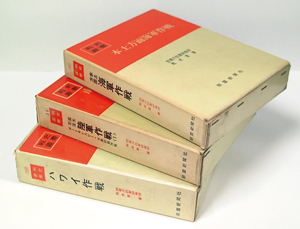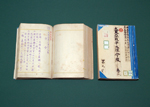Japan’s War In 102 Volumes
- By Peter Harmsen
- 26 July, 2013
- 16 Comments
 Every nation feels a need to record its wars. It’s considered a moral obligation to those who suffered and died. But at a practical level, it also shows a concern about learning from the past, for future use. This is the origin of official military histories, which have become de rigueur for all modern nation states. The first example of this kind was a History of the Wars of Liberation, issued by the Prussian General Staff in the early 19th century, about the German participation in the Napoleonic Wars.
Every nation feels a need to record its wars. It’s considered a moral obligation to those who suffered and died. But at a practical level, it also shows a concern about learning from the past, for future use. This is the origin of official military histories, which have become de rigueur for all modern nation states. The first example of this kind was a History of the Wars of Liberation, issued by the Prussian General Staff in the early 19th century, about the German participation in the Napoleonic Wars.
World War I gave rise to a fair number of multi-volume official histories on both sides, soon to be beaten by the even more extensive official historiography concerning World War II. The most ambitious endeavor in this field is the 78-volume United States Army in World War II, matched by an official history of the operations of the US Marine Corps in the war as well as a semi-official history of the US Navy.
Other nations on the Allied side – everyone from the United Kingdom to the Netherlands – have been engaged in parallel efforts. An official German history of the war, in ten hefty volumes, some in several parts, has now also been completed. What is less well-known is the fact that Japan began issuing its own huge official history, the Senshi Sosho, as early as the 1960s.
While large Japanese archives were destroyed before the end of the war, some survived and ended up in American hands, and as US authorities handed them back to Japan, they became the core of the new scholarly endeavor at the Japanese Defense Ministry’s War History Office to record the disastrous war in the greatest possible detail. When the history was finally completed in 1980, it ran an impressive 102 volumes.
Since then they have been of great value – to everyone who reads Japanese. The challenge has been to make them available to a larger audience. So far there have only been two major attempts to translate parts of the massive work into English. One is an Australian translation of a volume dealing with the 1942-43 New Britain and Papua Campaigns.
The other is Dutch, and still ongoing. The Corts Foundation, a non-profit dedicated to the history of Indonesia, is in the process of translating a maximum of six volumes, focusing on the ones dealing with Japanese operations in and around what was then the Dutch East Indies. In itself, it’s a massive undertaking, and once it’s done there’ll only be 95 volumes left of the Senshi Sosho to translate into English…

 Copyright © 2025
Copyright © 2025
Leave a Reply